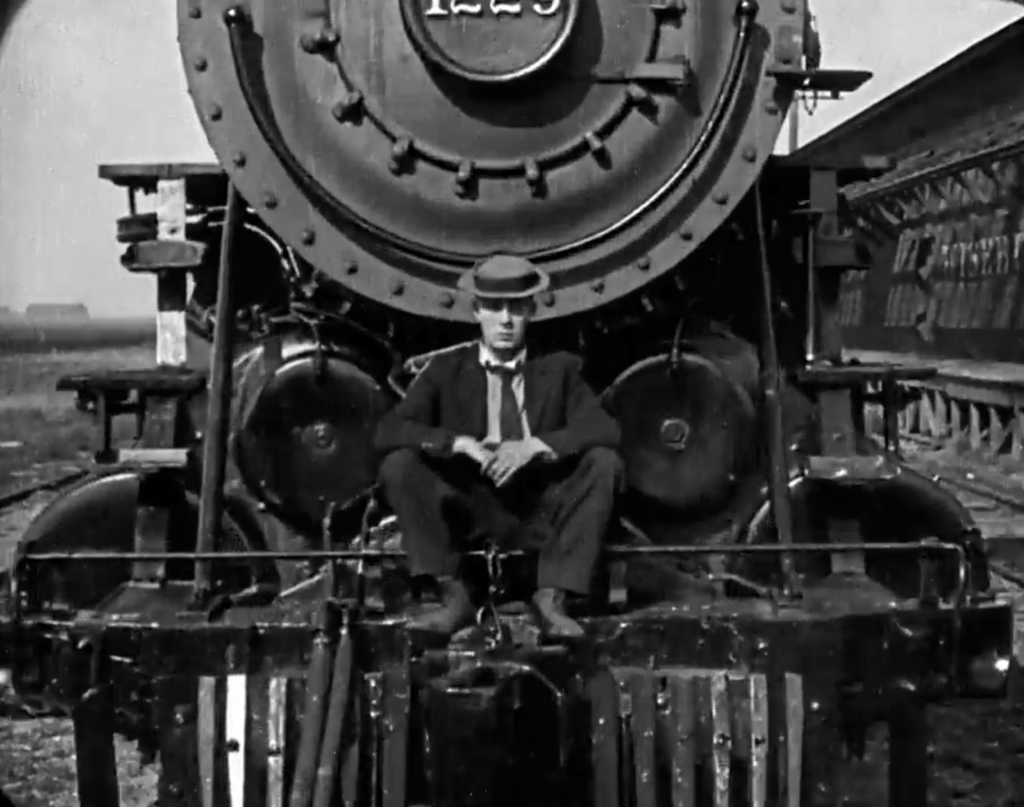“Silent films were never really silent” is one of the main tenets one hears or says in defense of silent films. The medium’s name itself has stuck since the talkie transition, conjuring up a negative in the imagination of anyone who reads or hears it.
The name has also reinforced another notion about these movies: namely, that they are handicapped (if that term is still being used).
After all, it’s the silence and the monochrome that is blamed for their lack of appeal to contemporary audiences and young people. If only these motion pictures from 90-110 years ago could have color and naturalistic sound breathed back into them. They just need to be slowed down to a natural speed so the people in them didn’t “look like they were running around like the Keystone Kops”.
There is a certain magic and revelation when this is done to newsreel footage or to actualities from the turn of the last century. These were motion picture records of snippets of life itself, and so the filling in of color and sound and movement that’s usually done by our brain when viewing these – especially our right hemisphere – does in some way bring a sense of realism to these scenes.

But somewhere around 1909-1911, people making moving pictures embraced the what’s-missing of silent film, compensated for it, and utilized it. They ran with it, in many cases, seeing what you could get away with by deliberately leaving things out, skipping pieces of the story or the scene’s elements. The developments in cinema language based on this leaving out, or merely suggesting of story or dramatic elements, is what makes silent film Silent Film and not film with no sound.
In the last several months there have been videos posted to YouTube using available AI to “restore” these missing elements to works of cinema made before the Vitaphone opened its mouth. These have gotten a lot of play, excitement and outrage online. I get asked about them, and links land in my inbox or social feeds. Most recently, it’s been the 1896 Lumiere Brothers’ film Arrival of a Train at La Ciotat.
There is something both intriguing and unnerving about viewing the re-inflating of the realities of early actualities. And I’m sure it’s fun doing the work itself, finally making these films be what people may have wished they could have captured as they turned their cranks. It’s an amazing technology, one that will continue to develop and snowball over the coming months and years.
But it’s precisely the aesthetic and language of the what’s-missing that makes cinema from the early ‘teens through the late ‘twenties work, that makes it as expressive, creative and imaginative as it is.
This is what I discuss in the silent film course I teach, and if you’re interested in a better explanation of this core aesthetic of what Silent Film is, I recommend reading the first four chapters of Walter Kerr’s The Silent Clowns. It’s the homework I give my students for the first two class sessions.
I hope that better and better uses for AI and pre-1930 cinema are developed and used. Like interpolating frames where maybe half a foot of film is missing here and there so we’re seeing what people saw during the original release. Or — miracle of miracles — clearing up nitrate decomp. But silent films don’t need any help, thank you, and if they get “fixed” with AI and other computer technology…they might actually wind up broken.
If you want people to get interested in silent movies, try bringing your friends to a silent film show.
I’ll see you at the silents!